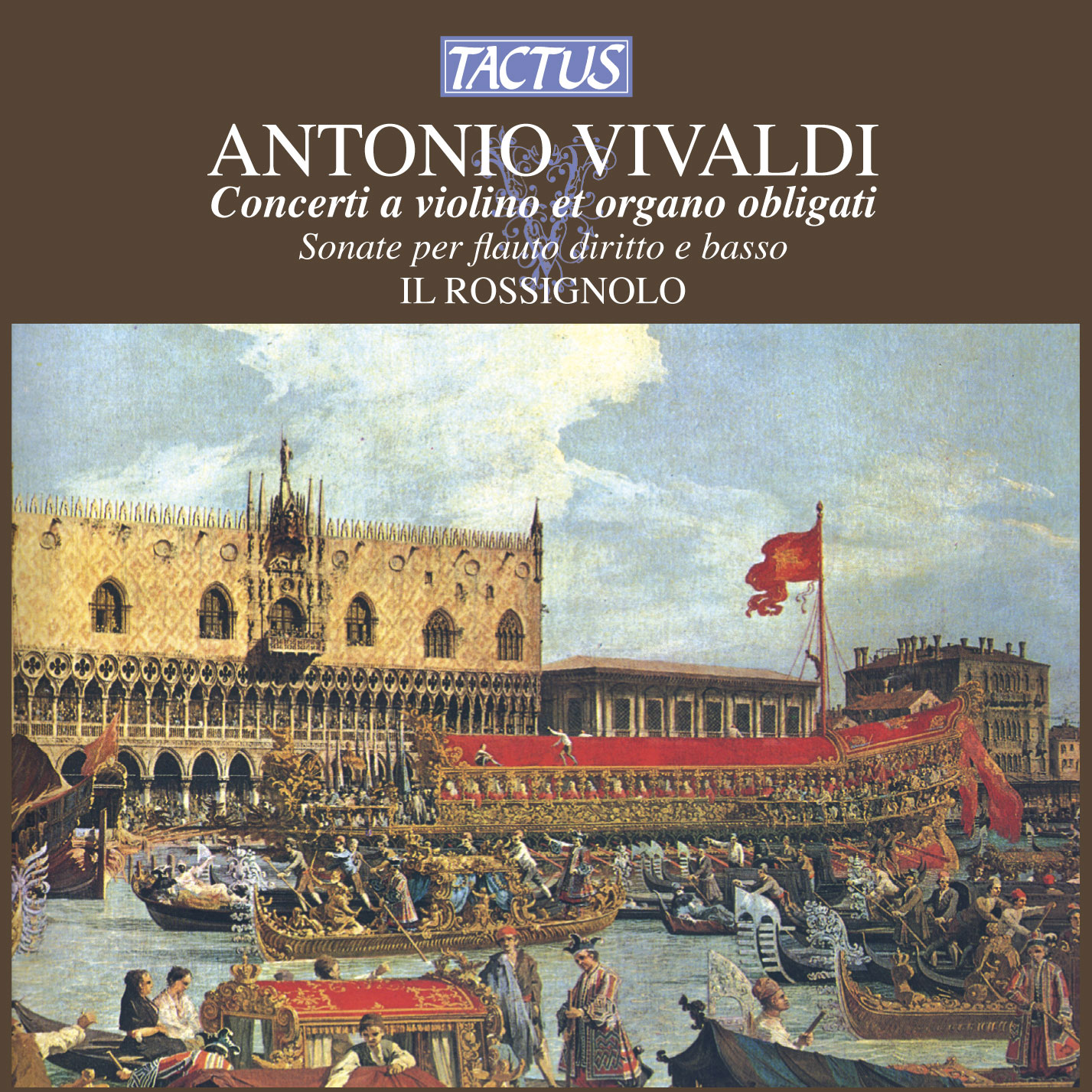VIVALDI ANTONIO
This recording features two complete collections: the concertos for organ and violin (in one case, organ, violin and cello) and the sonatas for recorder and bass. Both collections, in our opinion, contain aspects of exceptional interest.
Although volumes have been written about Antonio Vivaldi and his instrumental compositions, the five Concerti a violino et organo obligati employing organ instrument have been practically ignored.
One is immediately struck by the fact that the number of such works is extremely limited—a mere five, in fact—compared to the number of concertos dedicated to other instruments, and this is underscored by the rare occasions when Vivaldi used the organ as an obbligato instrument.
We would first of all like to draw attention to the way in which these few compositions represent an historical fact of great significance.
If we attempt to address the problem of dating the works (and, in the absence of any certainty concerning dates, our solution can only be indicative), and we base our hypothesis on a comparative analysis of the manuscript paper upon which the music was copied, we can place these pieces before 1725.
If we then consider that Bach probably composed his Brandenburg Concertos (the fifth of which features a solo harpsichord) around 1721, and his concertos for harpsichord and strings around 1730; that Handel wrote his organ concertos in 1738 (op. 4) and 1757 (op. 7); and that Corrette’s concertos for organ date from around 1756, Vivaldi thus emerges as one of the first composers to have removed the keyboard instrument from its fundamental but obscure role of a continuo player, and placing it instead in the forefront of an instrumental ensemble.
A few years later, keyboard instruments in general would become one of the most popular choices for solo concertos.
Further evidence of these works being among the earliest examples of the genre is found in the parallels which arise if we look at the transition from the trio sonata to the first sonatas for a solo instrument and obbligato harpsichord which was then taking place, at a moment when the evolution of playing techniques on keyboard instruments was resulting in its increasing emergence as a solo instrument.
Indeed, just as in a trio sonata where one of the two melodic lines might be entrusted to the keyboard (together with the bass), two of these concertos (RV 766 and RV 767) appear to be reworkings of previous pieces composed for two violins and strings, and in this case the organ substitutes one of the two violins.
An analogous example is the concerto RV 554, “officially” for oboe and two violins: at the beginning of the piece we find the indication that the oboe and second violin may be substituted by the cello and organ, respectively.
In such adaptations, Vivaldi does not seem concerned about modifying the writing style of the newly assigned part, and this fact may indicate that the composer considered certain passages originally destined for the violin to be comfortable on the organ.
On the other hand, the need to have keyboard pieces at the ready (perhaps for some patron or unknown dedicatee) may have led him to rework certain concertos which were already particularly suitable.
Tracklist
Vivaldi, Antonio
Concerto for Violin, Organ and Cello in C Major, RV 554a
1 - I. [Allegro] (2:15)
2 - II. [Largo] (2:41)
3 - III. Allegro (3:00)
Concerto for Violin and Organ in D Minor, RV 541
4 - I. Allegro (3:27)
5 - II. Grave (5:11)
6 - III. Allegro molto (2:40)
Recorder Sonata in F Major, RV 52
7 - I. — (2:55)
8 - II. Allemanda (3:06)
9 - III. Aria di Giga (after RV 1 and RV 192a) (2:27)
Concerto for Violin and Organ in F Major, RV 542
10 - I. [Allegro] (3:36)
11 - II. [Largo] (5:37)
12 - III. Allegro (3:08)
Concerto for Violin and Organ in C Minor, RV 766
13 - I. Allegro (3:18)
14 - II. Largo (4:06)
15 - III. Allegro (2:33)
Recorder Sonata in D Minor
16 - I. Andante (2:27)
17 - II. Allegro (1:27)
18 - III. Largo (2:13)
19 - IV. Allegro (2:53)
Concerto for Violin and Organ in F Major, RV 767
20 - I. Allegro (0:26)
21 - II. Larghetto (4:06)
22 - III. Allegro (0:26)
- Composer: VIVALDI ANTONIO
- Performers: Il Rossignolo: Martino Noferi: recorder; Fabio Cafaro: solo violin; Maria Paola Cavallini: violin; Rosario Di Meglio: viola; Raffaele Sorrentino: cello solo and continuo; Carlo Pelliccione: double bass; Giangiacomo Pinardi: theorbo; Ottaviano Tenerani: organ and conductor
- Historical Period: Late Baroque
- Code: TC 672239
- Edition: 2006
- Barcode: 8007194102888
- Set: 1
- Total tracks: 22
- Total duration: 00:58:19






